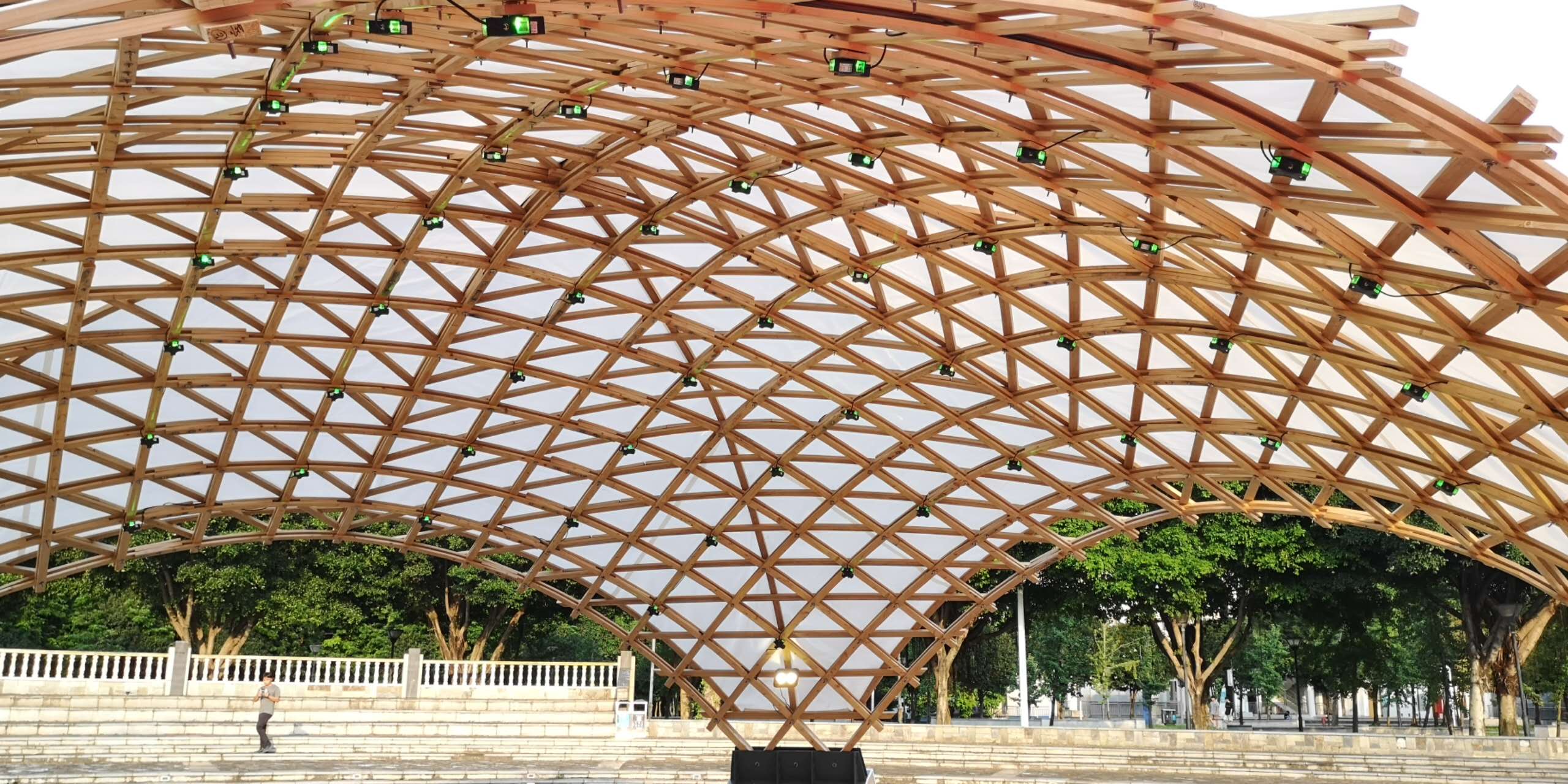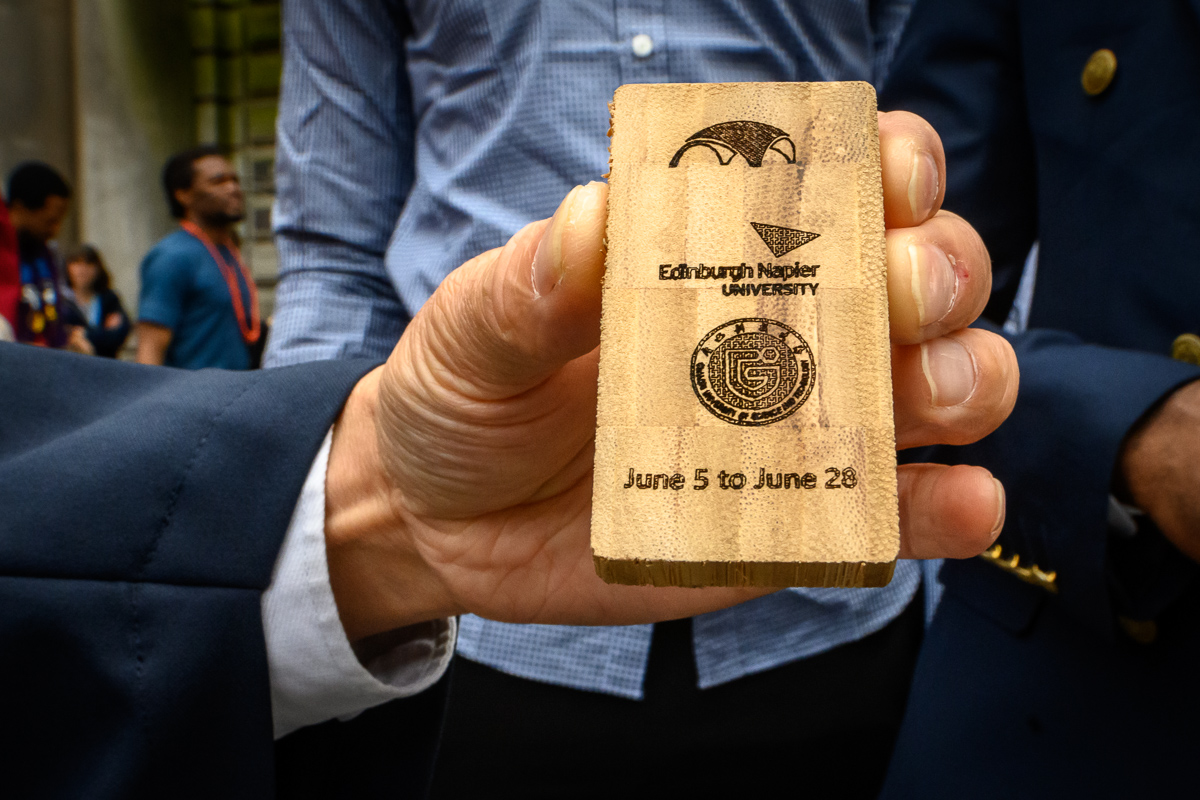
A team of students from Edinburgh Napier have completed a ‘world-first’ construction project in China based around sustainable bamboo building material.
The scholars helped build the first bamboo-timber composite grid shell structure of its kind in Guangxi, with 13 students from its department of built environment working alongside colleagues from Guangxi University of Science and Technology and Inner Mongolia University of Science and Technology.

The finished 12m x 12m construction, which was funded by the British Council and Turing Scheme UK, is hoped to help develop sustainable building methods in a bid to combat climate change.
Bamboo’s strength and flexibility, as well as its wide availability as a natural resource, makes it a ‘viable’ construction material for large-span roof structures in the future, Edinburgh Napier University said.

The Napier team travelled to China in early June, using expertise picked up on programmes such as architectural technology and building performance, advanced structural engineering, and civil engineering to contribute to the building effort in various different roles.
Many of the students and staff involved have reunited at the university’s summer graduation ceremonies, where six of the scholars, Onoh Nkiruka Patricia, Odutayo Olamide, Banke Olatunbosun, Mark Cawley, Olufemi Adeboye and Abisola Sarah Adeshina, collected their degrees.
Onoh Nkiruka Patricia, who took on the role of project safety team leader, spoke of her pride at taking part in the world-leading work. After leaving her home in Anambra, Nigeria, she worked in health and safety for 15 years, most recently in the UAE – and has now graduated with an MSc in environmental sustainability.
She said, “To say I enjoyed it is an understatement! I didn’t want to leave. I worked with my heart – this has been my passion.
“That’s what I brought to the site, 101%. It was challenging – it certainly wasn’t easy – because of the climate we worked through the night at times. But when you make up your mind to do something, you do it.
“It was my responsibility to get everyone back safely, and I took that responsibility seriously.
“I am indebted to the team who all gave so much to this project.”
As well their degrees, the student team have been given tiles, made from the same bamboo-based material as the grid shell, as a memento of their role in its creation.

Project lead, Professor Johnson Zhang, of Edinburgh Napier University’s school of computing, engineering, and the built environment, said, “This project showcased the pioneering research in bio-based construction at Edinburgh Napier University.
“It also serves as a testament to the immense potential of innovative sustainable construction technology in shaping a better future for the greener built environment we are creating.
“It was a privilege working with our Team BE-Napier and other two partner university student groups, together we formed a professional, dedicated and creative team. I enjoyed every moment of working with them.”
Alongside new graduates, Stephen Jideofor Onwunduba, Moses Okon Nseabasi, Mufthau Olawale Adebayo, Devika Vijayan, Konrad Zbyrowski, Alice June Davyson and Zara Anam Rafiq took part in the project. PhD student, Yanghao Pei, was its lead researcher, while Dr Ahmed Mohamed, Dr Daniel Barreto and Dr Suha Jaradat were on the project team.
The team are already making plans to carry out further research on the potential of bamboo-timber composite structures.











